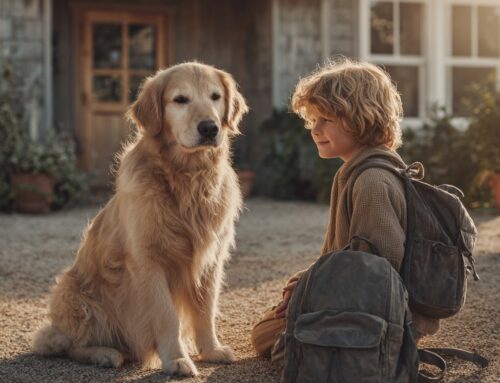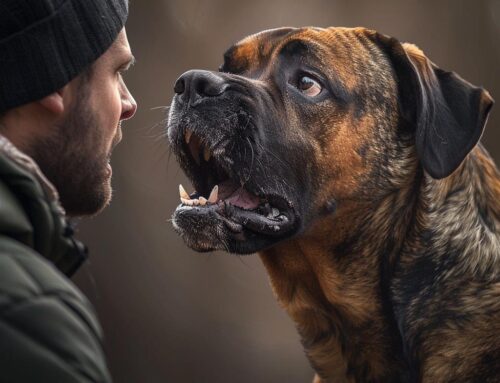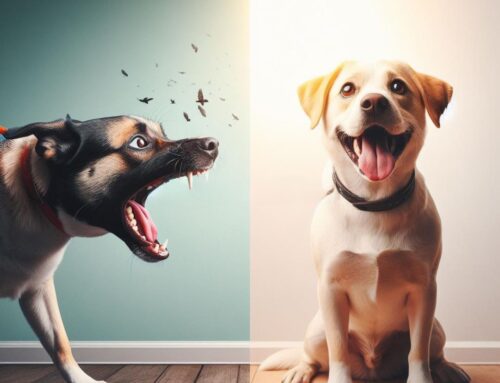To see a dog trembling and cowering in the corner is heartbreaking. It’s no surprise that a fearful dog is not a happy dog. However, though your dog may never overcome all his fears, there is hope that he can live a safe and happy life if you take the time to understand and help him.
Difference Between Fears, Phobias, and Anxiety
Your dog’s fear quotient can range from very specific fears to phobias to general anxiety. The differences are mainly a matter of degree.
Fears
Fear is an instinctual reaction caused by a person, thing, or situation that results in a dog feeling apprehensive. This real or perceived threat causes the dog’s autonomic nervous system to gear up to prepare the dog for fear, flight, or freeze. In the wild, these reactions would be the “normal” responses for a dog to adapt and survive in the face of real dangers.
Some of the common things that dogs are afraid of include:
- Strangers
- Other dogs
- Loud noises
- Abandonment
- Going to the veterinarian
Phobias
The next rung up is phobia. A phobia develops after the dog has had a prior fear experience that escalates into an irrational reaction every time he is exposed to the experience. Thunderstorms are an excellent, and very common, example.
Anxiety
Just like us humans, some dogs are preprogrammed to be anxious, and also, like us, anxiety is the fear of unknown things or events. Behaviors associated with anxiety look mostly the same as those of fear.
Signs of Canine Fear and Anxiety
Dogs are unique beings, and the signs of anxiety and fear will vary depending on the dog’s personality, but the general behavioral manifestations are flight, flight, avoidance, and surrender. These boil down to some of the following common behaviors.
Classic Mild Signs
Although classified as mild, these behaviors still result in an uncomfortable dog.
- Trembling and shaking
- Tucking the tail
- Trying to escape or hide
- Suddenly becoming less active
When Panic Sets In
When a dog becomes panicked, his behaviors rise several notches above the milder signs of fear and anxiety. These are some of the common behaviors associated with panic.
- Panting
- Pacing
- Significant attempts to escape
- Injury caused by uncontrolled physical actions
- Unprovoked aggression
Other Signs of Fear and Anxiety
In addition to the signs above, you might also notice these behaviors in a fearful or anxious dog:
- Diarrhea
- Uncontrolled peeing
- Constant licking of paws or other parts of the body resulting in sores
- Chasing the tail
How You Can Help Your Fearful Dog
First, it’s important to realize that you may not be able to completely cure your shy, fearful, or anxious dog to be completely “normal.” Some of his behaviors probably stem from genetics. But what you can do is help him be more comfortable in dealing with his triggers and therefore lessen his reactive behaviors.
Here are some ways to help your dog live his happiest life.
Know that You are Pack Leader
As you may know, dogs live in packs in the wild, and each pack has a pack leader. In your home, with your dog, you are the pack leader. It’s important that you are a brave and fearless leader because your dog will take his cue from you. As his pet parent, he will feed off your confidence and know that everything is fine. If you are not confident in a situation, then he will sense it and remain fearful.
Recognize His Fear and Understand its Triggers
Step back and take a close look at his behaviors and think about its causes. Try to understand and be patient that your dog is not trying to upset or defy you. He is afraid or anxious, and therefore, very uncomfortable with his current world view. Finding his triggers may take time and will vary from dog to dog. Reactions to strangers are easy, but when he exhibits fearful behaviors for no obvious reason, your job will be somewhat harder.
Take it Slow and Easy
The number one thing you need to do to help your dog is to take things slow and easy. Unfortunately, some people believe in thrusting their dog completely into a situation that scares him. This approach will only serve to scare him more and possibly cement his fears forever.
Redirect Him Away from the Fearful Thing
When helping a fearful pup, you need to be your dog’s stalwart cheerleader. Give him lots of encouragement for his small forays into facing a fearful situation. Along with your verbal encouragement, give him lots of high-value treats. Your goal is to set up a scenario where he faces his fear, takes obedience cues from you, and then all good things happen.
Manage His Environment
By understanding and managing your dog’s environment, you are well on your way to making him feel safe and secure, and making him feel safe is a huge step forward. There are so many ideas for managing his environment, and they vary depending on the dog and his fears. In general, protect him from unexpected fearful situations as much as possible.
Avoid Punishment Or Negative Consequences
This is why it is so important to understand what is going on with your dog. Understand that he is not purposefully misbehaving. The downside of using punishment on a fearful dog is that he will become even more afraid, and probably now, of you.
If All Else Fails
If you’ve tried some of the techniques here and find your dog is still fearful, it is time to call in the experts. Here at Performance K9 Training, your dog will receive the best possible training by David Greene, founder and chief trainer. David is recognized nationally and internationally for his outstanding skill at working with dogs. He has represented the USA on four world teams where his dogs achieved world standing as well as held the title of five-time regional champion.
Performance K9 also offers board and train options where your dog stays with us for a set period and receives expert training to help him overcome his fears.
Call us for more information.







